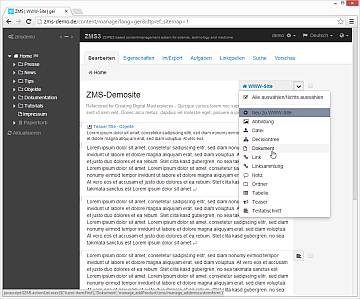Screenshot of the ZMS management interface: the ZMS interface is concentrated on the text input and the markup. The extremely easy and fast application enables the editor to construct the content of a whole website without any HTML knowledge. Access the ZMS test zone
ZMS - open source content management for science, technology and medicine
ZMS is a content management solution for the site-based e-publishing. A simple editing interface and flexible content model (multilingualism, metadata, content objects, XML import / export, workflow etc.), is designed for optimal productivity for web sites, documentation and educational content.



